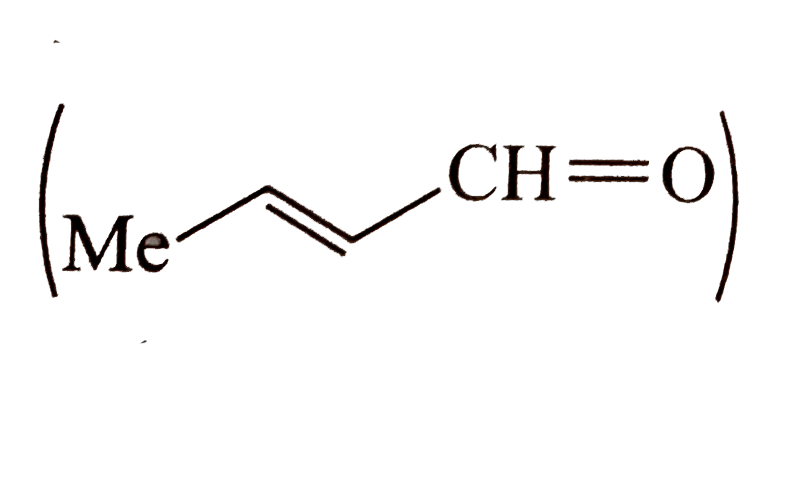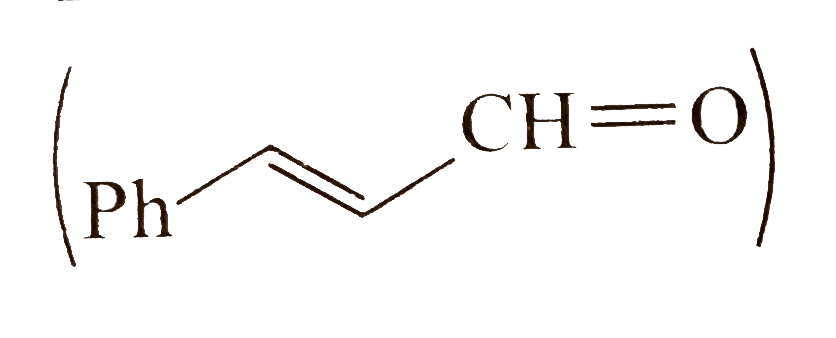Which of the following statements are correct ?
The nucleophilic addition of HCN to  (I) results in major addition to (C=O).
(I) results in major addition to (C=O).
The nucleophilic addition of HCN to (I) results in major addition (C=C)
The nucleophilic addition of PhMgCl to  (II) results of 1,4-addition.
(II) results of 1,4-addition.
The nucleophilic addition of PhMgCl to  (III) results in addition to (C=C).
(III) results in addition to (C=C).
The correct Answer is:B, C, D
To determine which statements regarding the nucleophilic addition to alpha-beta unsaturated carbonyl compounds are correct, we need to analyze the mechanisms involved in these reactions. Here’s a step-by-step breakdown of the reasoning:
Step 1: Understanding the Structure
- Identify the compound: An alpha-beta unsaturated carbonyl compound has a carbonyl group (C=O) and a double bond (C=C) between the alpha and beta carbons.
- Recognize the sites of nucleophilic attack: The nucleophile can attack either the beta carbon (C=C) or the carbonyl carbon (C=O).
Step 2: Analyzing Nucleophilic Attack
- Case 1 - Attack on Carbonyl Carbon: If the nucleophile attacks the carbonyl carbon, it leads to the formation of an intermediate that can undergo tautomerism, resulting in a product that is typically less stable.
- Case 2 - Attack on Beta Carbon: If the nucleophile attacks the beta carbon, it leads to a 1,4 addition product, which is generally more stable due to the formation of a new C-C bond.
Step 3: Evaluating Bond Strength
- Bond Strength Considerations: The carbon-carbon double bond (C=C) is weaker than the carbon-oxygen double bond (C=O). Therefore, it is easier for the nucleophile to attack the beta carbon than the carbonyl carbon.
- Conclusion on Major Product: The 1,4 addition (attack on the beta carbon) is favored due to the weaker bond and the stability of the resulting product.
Step 4: Analyzing the Statements
- Statement A: "In the nucleophilic addition of HCN to this compound, the major addition is to the CO bond."
- Evaluation: This is false. The major addition occurs at the C=C bond.
- Statement B: "The nucleophilic addition of HCN to the first compound results in the major addition to the C-C double bond."
- Evaluation: This is correct. The major product is formed from the attack on the beta carbon.
- Statement C: "The nucleophilic addition of phenyl magnesium chloride (PhMgCl) results in the 1,4 addition."
- Evaluation: This is correct. PhMgCl acts as a nucleophile and will favor 1,4 addition due to the reasons discussed.
- Statement D: "The nucleophilic addition of PhMgCl results in the addition to the C-C bond."
- Evaluation: This is also correct. Due to steric hindrance and bond strength, PhMgCl will predominantly add to the beta carbon.
Final Conclusion
- Correct Statements: B, C, and D are correct.
- Incorrect Statement: A is incorrect.
- Identify the compound: An alpha-beta unsaturated carbonyl compound has a carbonyl group (C=O) and a double bond (C=C) between the alpha and beta carbons.
- Recognize the sites of nucleophilic attack: The nucleophile can attack either the beta carbon (C=C) or the carbonyl carbon (C=O).
- Case 1 - Attack on Carbonyl Carbon: If the nucleophile attacks the carbonyl carbon, it leads to the formation of an intermediate that can undergo tautomerism, resulting in a product that is typically less stable.
- Case 2 - Attack on Beta Carbon: If the nucleophile attacks the beta carbon, it leads to a 1,4 addition product, which is generally more stable due to the formation of a new C-C bond.
- Bond Strength Considerations: The carbon-carbon double bond (C=C) is weaker than the carbon-oxygen double bond (C=O). Therefore, it is easier for the nucleophile to attack the beta carbon than the carbonyl carbon.
- Conclusion on Major Product: The 1,4 addition (attack on the beta carbon) is favored due to the weaker bond and the stability of the resulting product.
- Statement A: "In the nucleophilic addition of HCN to this compound, the major addition is to the CO bond."
- Evaluation: This is false. The major addition occurs at the C=C bond.
- Statement B: "The nucleophilic addition of HCN to the first compound results in the major addition to the C-C double bond."
- Evaluation: This is correct. The major product is formed from the attack on the beta carbon.
- Statement C: "The nucleophilic addition of phenyl magnesium chloride (PhMgCl) results in the 1,4 addition."
- Evaluation: This is correct. PhMgCl acts as a nucleophile and will favor 1,4 addition due to the reasons discussed.
- Statement D: "The nucleophilic addition of PhMgCl results in the addition to the C-C bond."
- Evaluation: This is also correct. Due to steric hindrance and bond strength, PhMgCl will predominantly add to the beta carbon.
- Correct Statements: B, C, and D are correct.
- Incorrect Statement: A is incorrect.
Topper's Solved these Questions
- ORGANIC REACTION MECHANISMBOOK - CENGAGE CHEMISTRY ENGLISHCHAPTER - ORGANIC REACTION MECHANISMEXERCISE - Single correct
43 Videos
- ORGANIC REACTION MECHANISMBOOK - CENGAGE CHEMISTRY ENGLISHCHAPTER - ORGANIC REACTION MECHANISMEXERCISE - Assertion-Reasoning
12 Videos
- ORGANIC REACTION MECHANISMBOOK - CENGAGE CHEMISTRY ENGLISHCHAPTER - ORGANIC REACTION MECHANISMEXERCISE - Comprehension
35 Videos
- NCERT BASED EXERCISEBOOK - CENGAGE CHEMISTRY ENGLISHCHAPTER - NCERT BASED EXERCISEEXERCISE - Chemical Equilibrium
73 Videos
- P-BLOCK GROUP 13 - BORON FAMILYBOOK - CENGAGE CHEMISTRY ENGLISHCHAPTER - P-BLOCK GROUP 13 - BORON FAMILYEXERCISE - Exercise Archives (Subjecive)
9 Videos
Similar Questions
Which of the following statement are correct?
View SolutionWhich of the following statements is correct?
View SolutionWhich of the following statements is correct ?
View SolutionWhich of the following statements is correct ?
View SolutionWhich of the following statements is correct?
View SolutionWhich of the following statements are correct?
View SolutionWhich of the following statements is correct?
View SolutionWhich of the following statements is correct ?
View SolutionWhich of the following statements is correct ?
View SolutionWhich of the following statements is correct ?
View Solution
